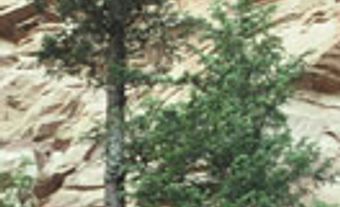Walnut (Juglans), genus of trees of the walnut family (Juglandaceae). The roughly 15 known species are widely dispersed through temperate and tropical regions. The 2 species native to Canada (butternut and black walnut) are found only in the East. Walnuts average 20-30 m high and have horizontally spreading branches. The large, compound leaves consist of 15-23 leaflets. The edible kernel, enclosed in a leathery or woody hull, is used as a table nut, for flavouring desserts (eg, ice cream) and for walnut oil. A yellow dye may be obtained from the fresh bark and from the husk of the fruit itself. Walnuts, usually in scattered stands, may grow in dry areas but prefer fertile, moist, well-drained soil. They are particularly common in shallow valleys and in alluvial plains bordering waterways. The hard, lustrous dark wood, used primarily for veneer, cabinetmaking, panelling and boat building, was common in pioneer times but is now rare. (See also Wild Nuts in Canada.)
-
- MLA 8TH EDITION
- Lacoursiere, Estelle. "Walnut". The Canadian Encyclopedia, 04 March 2015, Historica Canada. www.thecanadianencyclopedia.ca/en/article/walnut. Accessed 22 December 2024.
- Copy
-
- APA 6TH EDITION
- Lacoursiere, E. (2015). Walnut. In The Canadian Encyclopedia. Retrieved from https://www.thecanadianencyclopedia.ca/en/article/walnut
- Copy
-
- CHICAGO 17TH EDITION
- Lacoursiere, Estelle. "Walnut." The Canadian Encyclopedia. Historica Canada. Article published February 07, 2006; Last Edited March 04, 2015.
- Copy
-
- TURABIAN 8TH EDITION
- The Canadian Encyclopedia, s.v. "Walnut," by Estelle Lacoursiere, Accessed December 22, 2024, https://www.thecanadianencyclopedia.ca/en/article/walnut
- Copy
Thank you for your submission
Our team will be reviewing your submission
and get back to you with any further questions.
Thanks for contributing to The Canadian Encyclopedia.
CloseArticle
Walnut
Article by Estelle Lacoursiere
Published Online February 7, 2006
Last Edited March 4, 2015

 Share on Facebook
Share on Facebook Share on X
Share on X Share by Email
Share by Email Share on Google Classroom
Share on Google Classroom


